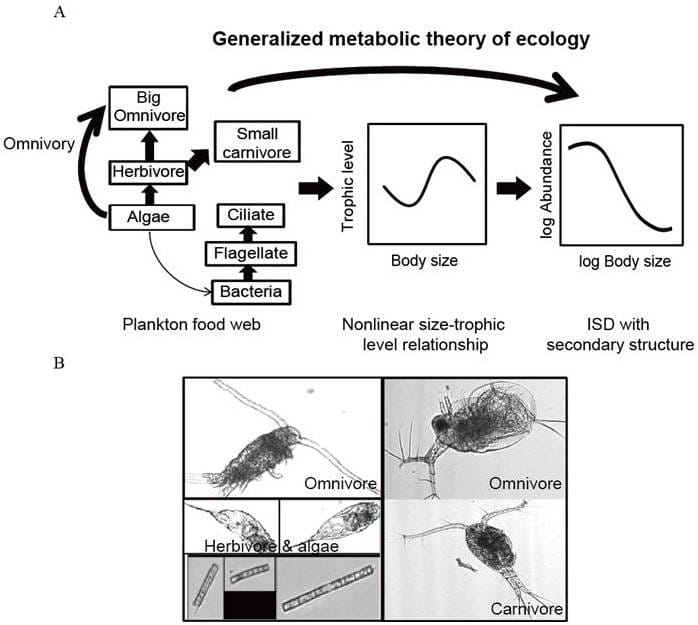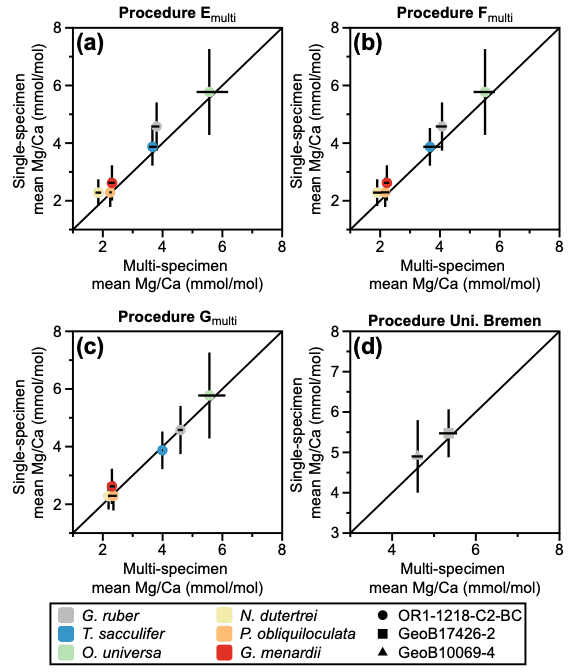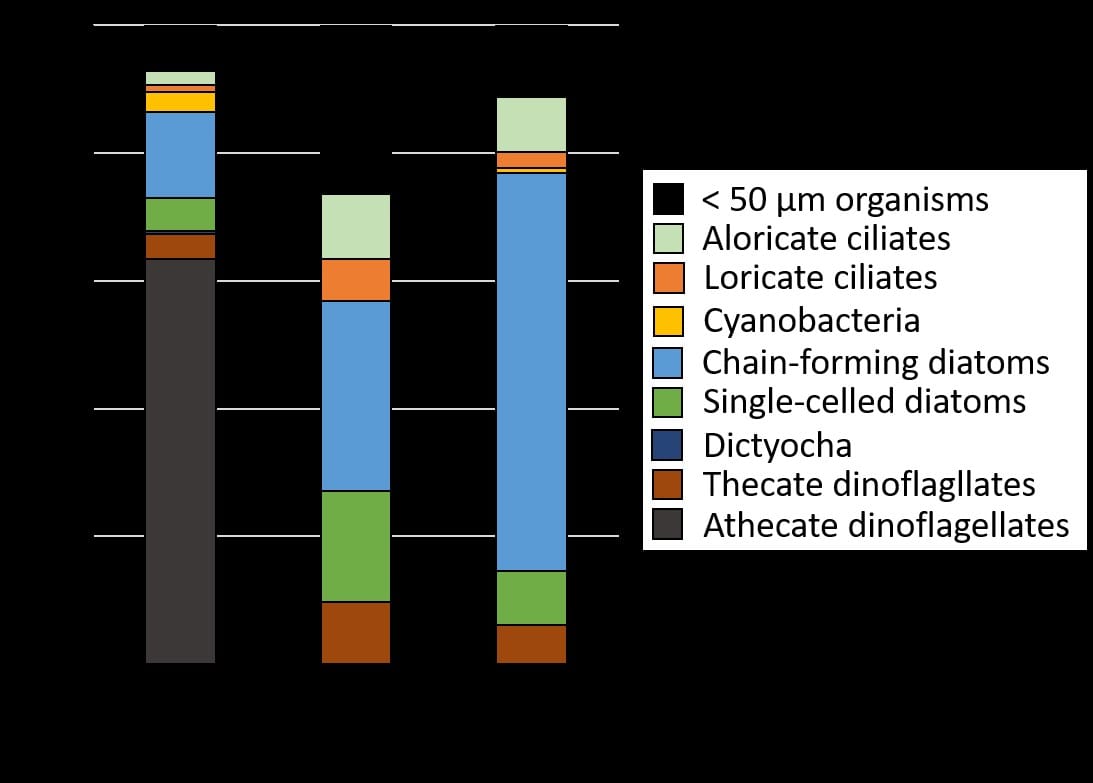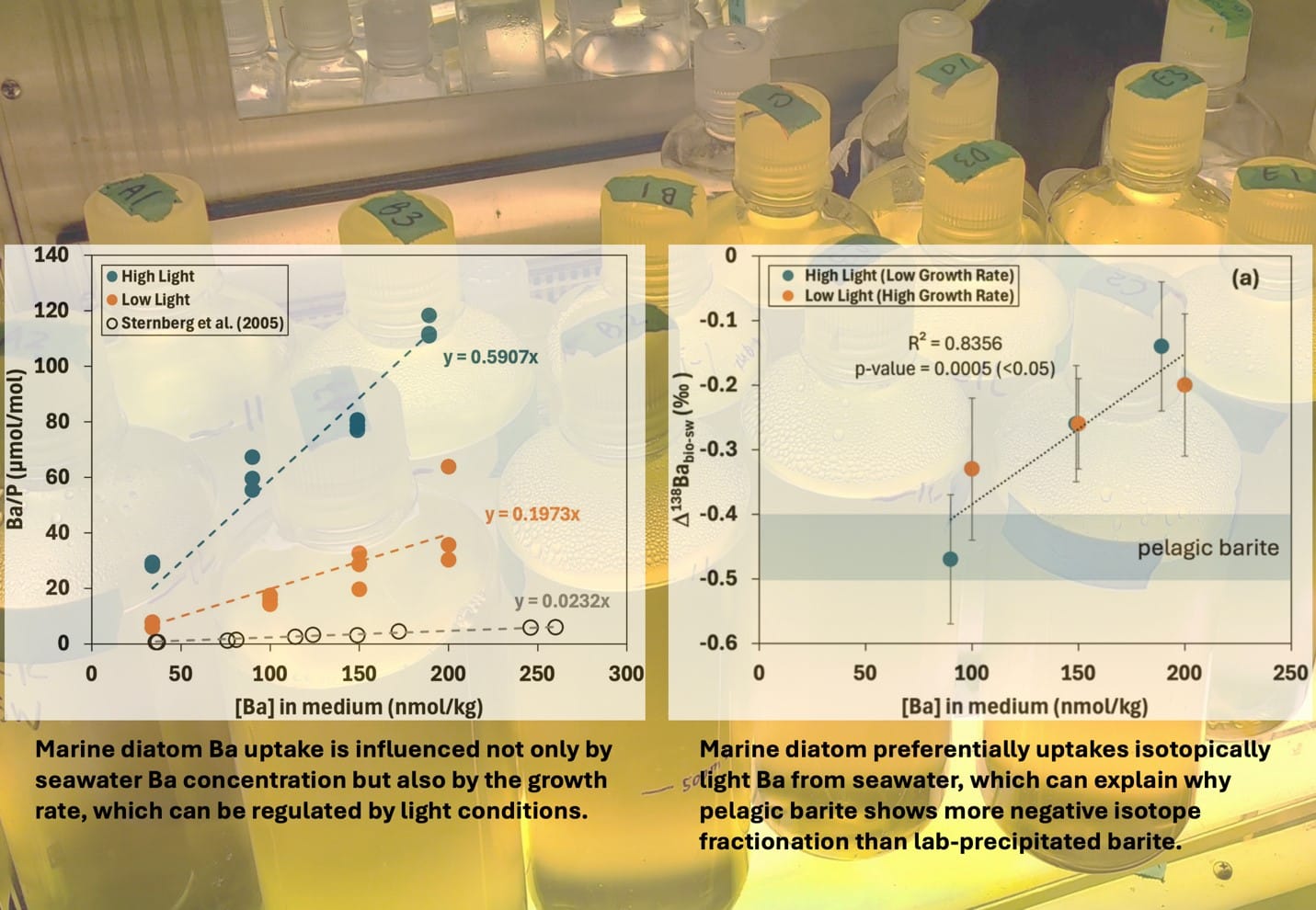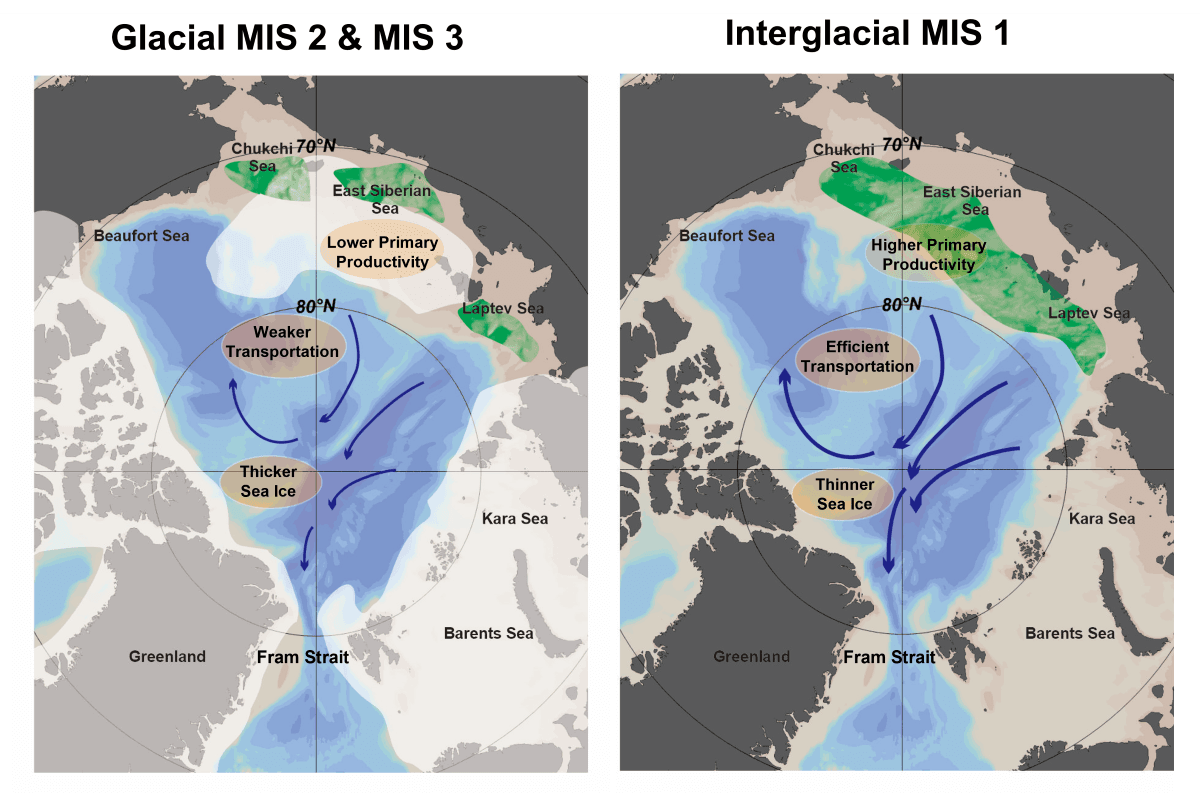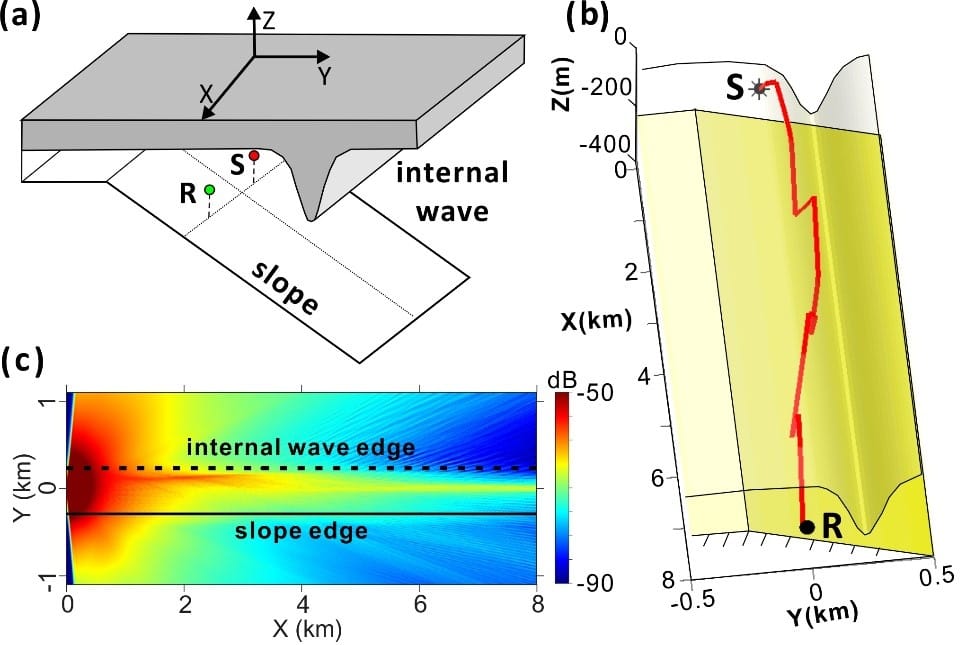“大魚吃小魚,小魚吃蝦米”,是一個最廣為人知的水域生態學原理。考慮能量金字塔(trophic pyramid)原則,小魚數量要比大魚多,而蝦米的數量又比小魚更多。“The big eat the small” is one of the most well-known ecological principles in aquatic ecosystems. Following this principle, together with energy loss during trophic transfer, a famous trophic pyramid is established; that is, the abundance of smallorganisms (e.g. small fishes) should be higher than that oflarge ones (e.g. large fishes). More specifically, the individual abundances decrease graduallyas they increase their body size, and therate of decline depends on how much energy loss due to organism’s metabolism. Such kind of abundance distribution of individual body size (ISD) is predicted to follows power-law distribution, according to the famous Metabolic Theory of Ecology.However, if big fish eat not only small fish but also more tiny shrimps, what would happen? An ecological research in Feitsui Reservoir points out that some macrozooplankton indeed eat not only microzooplankton but also tiny phytoplankton (omnivorous feeding);moreover, ultra-small unicellular ciliateseat flagellates or bacteria and become the top predator in microbial food web. These complex interactionsare likely to be common in nature, but the metabolic theory has neglected these complexities through assuming a linear relationship between body size and trophic level.
To appreciate these natural variations in characterizing ecosystem properties, the associate professors,Chih-hao Hsieh and Takeshi Miki and their student, Chun-Wei Chang, ofthe Institute of Oceanography, National Taiwan University, developed a novel generalized metabolic theory that can accommodate the nonlinear relationship between body size and trophic level. This study has been published in Ecology in April, 2014. According to their theory, the ISD contains not only power-law distribution but also secondary structure. The secondary structure represents the deviation from the power law distribution; for example, the abundance of some large-sized individuals will be higher than that of small-sized individuals. In the past, the secondary structure, albeit commonly observed in nature, has been overlooked and invited no consistent explanation. However in their new findings,the team, for the first time, proposes the secondary structure is a consequence of complex food web interactions;that is, the ISD secondary structurearise whenthe linear relationship between body size and trophic level is violated (Figure 1). The team used automatic imaging systems to quantify individual size distribution and employed stable isotope analysis to quantify trophic interactions. Their theory successfully predicts the empirical plankton data in Feitsui Reservoir quantitatively. The findings have important management implications, because the secondary structurecan be used to infer food web complexity. The food web complexity has been demonstrated to be an important propertylinking to the reliability of ecosystem functions; however, it is much more difficult to directly measure food web complexity than ISD.To this end, the ISD secondary structure can be a useful biological indicator to infer food web complexity in ecosystems, such as Feitsui Reservoir. For example, the study finds that the secondary structure becomes more apparent when the phytoplankton production is too high or too low in Feitsui Reservoir. Such kind of information can be used for monitoring and management of thereservoir.
Reference
Chang C. W., T. Miki, F. K. Shiah, S. J. Kao, J. T. Wu, A. R. Sastri, and C. H. Hsieh (2014) Linking secondary structure ofindividual size distribution with nonlinear size-trophic level relationship in food webs. Ecology. 95: 897-909.
Figure 1.A) Food web with complex feeding interactions, such as omnivory and microbial trophic interaction may create nonlinear size-trophic level relationship. The nonlinearity in size-TL relationship induces the secondary structure of individual size distribution (ISD), which is the nonlinear structure of ISD in log space. B) The images of plankton in Feitsui Reservoir,Taiwan.
過去生態學家在“大吃小”的基本假設下,推導出個體大小的數量分布(又稱為個體大小頻譜-body size distribution)是呈現冪次分配(power-law distribution),也就是個體的數量隨著牠們的體型大小遞減,而遞減的速率是由能量從獵物傳遞到掠食者時生物代謝損耗的程度所決定,這就是著名的生態代謝理論 (Metabolic Theory of Ecology)。然而當大魚不只吃小魚,也吃更小的蝦米的時,會對生態系統造成怎麼樣的結果呢? 相似的故事情節其實發生在我們的湖泊和水庫及海洋中。一項在大台北翡翠水庫進行的生態研究中發現,當大型的浮游動物不再只吃小浮游動物,而是攝食更多小浮游植物,其食物階層會下降。然而許多微小的單細胞纖毛蟲,因為吃了更小的鞭毛蟲或細菌後,反而躍居食物階層的上層。這些複雜的食物網結構都可能使得一個常見的生態學基本假設:體型大小和食物階層呈現正向的線性關係,不再成立。
由台大海洋研究所謝志豪和三木健副教授以及學生張俊偉所領導的研究團隊提出了一個廣義生態代謝理論,發表於2014年4月號的生態學期刊 (Ecology)。該理論修正了生態代謝理論中對於體型大小與食物階層的線性假設。經由此新理論的修正,個體大小頻譜不再只是單純的冪次分配,還包含了次級結構。這些次級結構所表現的是:部分體型較大的個體反而會比體型稍小的個體有更多的數量。過去這些次級結構的產生並沒有一致的解釋,也鮮少引人關注。而這個研究首度提出次級結構的產生是因為食物網中複雜的交互作用所造成。例如: 當大魚不只吃小魚,卻吃更多小蝦米時,便會扭曲個體大小-食物階層之間的線性關係,進而使得個體大小頻譜產生次級結構。在實證研究上,研究小組利用自動化影像分析系統量化翡翠水庫中浮游生物的個體大小頻譜,並利用穩定同位素解析食物網中的攝食關係(trophic interactions)。結果顯示,研究小組提出的新理論精準地預測了翡翠水庫浮游生物的個體大小頻譜與食物網中複雜的攝食關係之間的連結(Figure 1)。這個理論在生態系管理上也深具實務價值,因為多數生態學家都認為,食物網結構攝食關係的複雜性可能影響生態系所提供的功能或資源,而結構的複雜性也和系統的穩定性息息相關。但是實際量測並追蹤食物網的複雜性,在實務上往往相當困難,此時個體大小頻譜的次級結構便可以提供一個良好的生態系指標反映當下食物網的結構。例如,本研究發現,翡翠水庫中浮游植物的生產力太高或太低時,都會使個體大小頻譜上的次級結構趨於明顯。這樣的生物指標,可提供監測管理翡翠水庫生態系統的良好依據。

